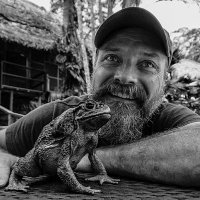
Danté Fenolio, Ph.D.
@dantefenolio
Ph.D Biologist: conservation photographer, caver, canopy biology, deepsea biodiversity, ground water ecology
For image use, contact [email protected]
ID: 1344765564984684544
31-12-2020 22:02:15
1,1K Tweet
5,5K Takipçi
877 Takip Edilen









































